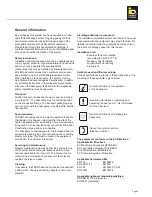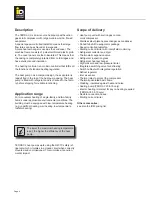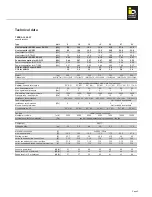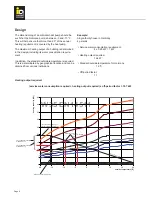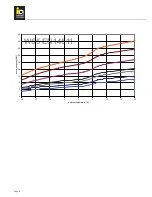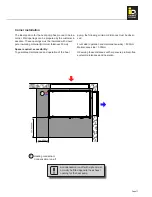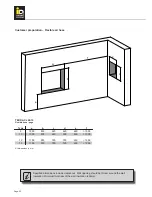
Page 10
Interior installation
Installation instructions:
Interior installation of the heat pump is recommended.
This means that the work involved in frost protection
and condensation run-off heating can be avoided. It also
means that the inlet air / outlet air can be conveyed to the
heat pump with the least possible heat losses. Various
installation options are described in detail in the following
chapters.
All components of the heat pump are insulated so that no
condensation is formed on the external parts even at out-
let air temperatures of -20°C. However, it is still advisable
to air the room regularly.
The heat pump is decoupled via vibration dampers. The
installation location should consist of a solid base.
Heating connection:
A flexible hose set is included as standard for heating
connections. See technical data for appropriate connec-
tion sizes for specific machines. It is advisable to use air
source heat pumps only in combination with a buffer tank
such as the IDM Hygienik Tank.
Condensation run-off:
Air source heat pumps generate condensation during
operation. With larger machines, up to 50l of water can
be extracted from the ambient air per day. The conden-
sation run-off should be conveyed into the waste water
channel via a siphon using the appropriate pipe diameter
for the machine.
Air routeing:
The various air ducts (see accessories for interior ins-
tallation) and wall openings are designed specifically for
the relevant machines in question. Efficient and fault-free
operation can only be ensured if the appropriately sized
connection elements are used.
Even light shafts which are too small
enlarge the pressure loss of the air
routeing. These must therefore be of a
sufficient size.
Light shafts must have a rainwater run-off.
Air inlet / air outlet:
The options for how the air inlet and air outlet are desig-
ned are varied.
The list below provides design guidelines:
Air inlet side and air outlet side should always be on
•
two different sides of the building.
Openings in the masonry must always be protected
•
against the penetration of foreign bodies (leaves, small
animals). To do this, mesh grilles should be fitted in
light shafts and weather-shield grilles should be ins-
talled on visible walls.
Wall openings must be created as per the specifica
-
•
tions and insulated against damp penetration using a
closed-pore insulating material (minimum thickness
50mm).
Noise
Noise level in the installation room depends on various
factors such as room size, absorption capacity, reflection,
free noise propagation, etc. For this reason, it is important
that the heat pump is situated as far as possible from
noise-sensitive areas. A noise-insulating door should be
fitted.
The night-time reduction in the fan speed means that noi-
se can be reduced by up to 4 dB. Noise level on the inlet
and exhaust air openings are also reduced by approx. 4
dB when using air shafts or ducts.
In case of exterior installation, the installation of the heat
pump in a corner can lead to a higher noise level. Super-
position of the sound waves means that noise level can
increase up to 3 dB.



